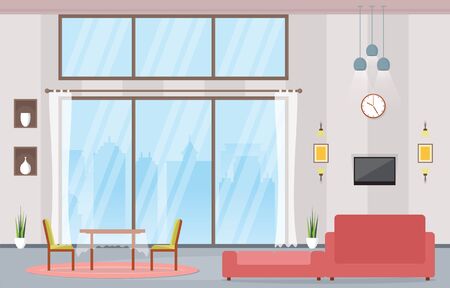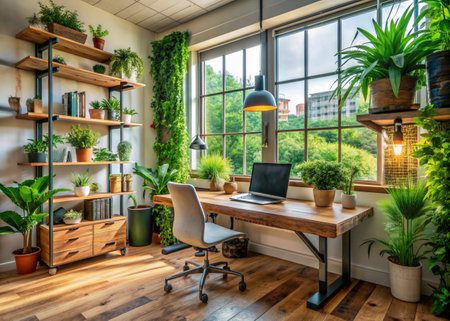Understanding the Importance of Good Lighting
When it comes to creating a productive and comfortable home office, lighting is often overlooked but plays a crucial role in your overall well-being. Proper lighting doesnt just help you see clearly—it directly impacts your productivity, reduces eye strain, and sets the tone for a healthier work-from-home experience. Poor lighting can lead to headaches, fatigue, and even affect your mood, making it harder to stay focused throughout the day. On the flip side, good lighting can energize your workspace, improve your concentration, and create an inviting atmosphere that motivates you to get things done. Whether youre working on spreadsheets or joining video calls, understanding the significance of effective lighting is the first step in transforming your home office into a space where you can thrive.
2. Assessing Your Space and Lighting Needs
Before diving into DIY lighting hacks, it’s important to understand what your home office actually needs in terms of illumination. Start by evaluating your current lighting setup—take note of both natural and artificial light sources. Consider the amount of daylight that enters your workspace during typical working hours, and identify any spots that feel too dim or overly bright. Check for glare on screens, uneven lighting across your desk, and shadows that might cause eye strain. To make this process easier, use the following checklist to assess each area:
| Area/Feature | Current Status | Needs Improvement? |
|---|---|---|
| Main Desk Area | Well-lit / Dim / Glare | Yes / No |
| Computer Screen | No glare / Some glare / Strong glare | Yes / No |
| Shelves & Storage | Visible / Hard to see items | Yes / No |
| Room Corners | Bright / Shadowy | Yes / No |
If you find areas that are lacking, think about how you use each space throughout the workday. Do you read paper documents, attend video calls, or sketch ideas? Each activity might require a different type or intensity of light. By pinpointing exactly where and when you need extra illumination—or less—you can tailor your DIY solutions for maximum comfort and productivity.

3. Affordable DIY Lighting Solutions
Upgrading your home office lighting doesn’t have to break the bank. There are plenty of budget-friendly hacks that can make a real difference in your workspace. Start by repurposing common household items—think old mason jars, glass bottles, or even tin cans—as creative lamp shades or desk lamp bases. Add a fresh coat of spray paint for a modern look that matches your decor. Another easy and affordable solution is using LED strip lights. These strips are flexible, energy-efficient, and can be placed under shelves, behind monitors, or along the edge of your desk to add ambient lighting and reduce eye strain. If you want adjustable brightness, look for dimmable or color-changing LEDs controlled via remote or smartphone apps. For an extra touch of comfort, try attaching clip-on reading lights to shelves or monitor stands. These can be repositioned easily to direct light exactly where you need it most. By getting crafty with items you already have and investing in low-cost lighting upgrades, you’ll create a more focused and inviting home office without spending a fortune.
4. Maximizing Natural Light
Natural daylight is one of the most effective ways to boost your mood, focus, and productivity while working from home. To make the most out of what you have, start by positioning your desk near a window if possible. This not only helps illuminate your workspace but also reduces eye strain caused by artificial lighting. Consider the direction your windows face—north-facing windows offer consistent light throughout the day, while east or west-facing ones can provide brighter bursts in the morning or afternoon.
Tips for Arranging Your Workspace
| Tip | Benefit |
|---|---|
| Place desk perpendicular to window | Reduces glare on screens and offers balanced light |
| Use light-colored furniture or decor | Reflects more daylight into your space |
| Avoid blocking windows with bulky items | Maximizes incoming sunlight |
Using Curtains and Blinds Effectively
The right window treatments can help you control natural light levels throughout the day. Sheer curtains are ideal for diffusing harsh sunlight while still letting plenty of light in. Blackout blinds or thicker drapes are great if you need to block out glare during video calls or when the sun is too intense. For ultimate flexibility, consider layered window treatments—combine sheer curtains with adjustable blinds so you can fine-tune brightness as needed.
Smart Solutions for Every Room
- If your office faces the street, opt for privacy films that let in light but keep things private.
- Install top-down/bottom-up shades for maximum control over both privacy and daylight.
Pro Tip:
Keep window glass clean to allow the maximum amount of sunlight into your home office. Even a little dust or grime can significantly cut down on brightness.
5. Choosing the Right Bulbs and Fixtures
Picking the right bulbs and fixtures can make a huge difference in your home office lighting setup. Not all lights are created equal, and the wrong choice can leave you feeling tired or unfocused. When shopping for bulbs, look for LED options—they last longer, use less energy, and don’t get as hot as traditional incandescent bulbs. LEDs also come in a wide range of brightness levels (measured in lumens) and color temperatures, which is key for comfort and productivity.
Understanding Color Temperatures
Color temperature is measured in Kelvins (K), and it affects how “warm” or “cool” your space feels. For most home offices, bulbs between 4000K–5000K are ideal. This range provides a cool white light that mimics daylight, helping you stay alert and focused. Avoid very warm (yellowish) bulbs under 3000K—they’re great for relaxing but not so much for getting work done.
Choosing Fixture Styles
The style of fixture matters too! Desk lamps with adjustable arms let you direct light exactly where you need it, cutting down on eye strain. Ceiling-mounted fixtures or pendant lights can fill the room with even illumination, while wall sconces help reduce shadows and create a balanced look. Try to layer different types of lighting—ambient from overhead fixtures, task lighting at your desk, and maybe even some accent lighting for added comfort.
Smart Bulbs for Added Flexibility
If you want ultimate control, consider smart bulbs. These allow you to adjust brightness and color temperature from your phone or with voice commands through Alexa or Google Home. That means you can switch from energizing daylight tones during work hours to warmer hues when you’re winding down—no extra hardware needed!
By understanding bulb types, color temperatures, and fixture styles, you can DIY your way to an office that keeps you comfortable and focused all day long.
6. Customizing Lighting for Video Calls
Whether you’re hopping on a quick Zoom check-in or leading a virtual team meeting, having the right lighting can make all the difference in how professional and approachable you appear on camera. Fortunately, you don’t need a fancy studio setup to look your best. Start by positioning your primary light source in front of you—natural daylight from a window is ideal, but if that’s not available, use a desk lamp with a soft white bulb. Avoid overhead lights or backlighting, which can cast unflattering shadows or make you look like a silhouette.
For DIY solutions, try placing a piece of white paper or a shower curtain over a lamp to diffuse harsh light and create a softer glow. If your home office has limited lighting options, experiment with multiple light sources from different angles using table lamps or even clip-on reading lights. Adjust the angle and height until your face is evenly lit without glare or dark spots.
You can also enhance your video presence by reflecting light onto your face using everyday items like a white poster board or foam core. Simply prop it up opposite your main light source to bounce extra brightness onto your features. If you wear glasses, tilt your light slightly above eye level to minimize reflections.
Lastly, pay attention to the color temperature of your bulbs—look for ones labeled “daylight” (around 5000K) for the most natural effect on camera. With these easy adjustments and household materials, you can create flattering, professional-looking lighting for all your video calls—no expensive gear required.


